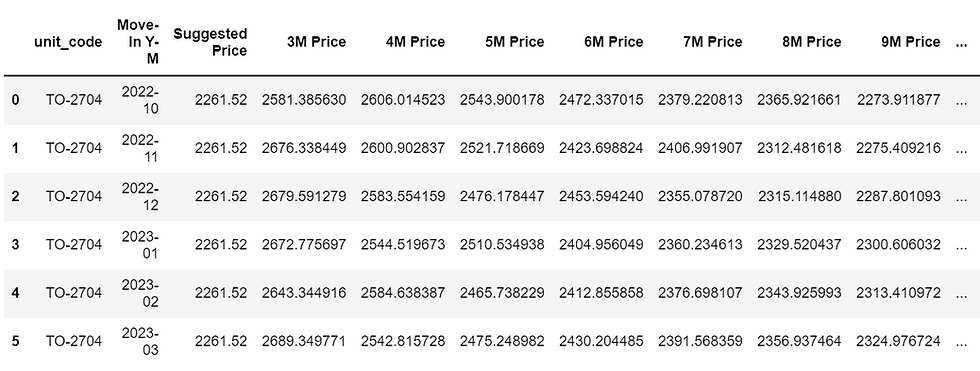Dynamic Pricing for Retailers
- michaelwoolfson
- Oct 22, 2021
- 4 min read
In an increasingly competitive market, retailers need to utilize any possible advantage they can over their competitors. One of the most influential factors for a consumer making a purchasing decision is pricing (and product discounts). This makes having a strong pricing strategy – one that effectively utilizes an organizations available data – absolute crucial for any retail business’s success. One interesting part of pricing optimization includes dynamic pricing. As the e-commerce sector continues to boom, especially during the COVID-19 pandemic, the frequency and ease of comparison shopping online has rapidly increased. This shift is expected to continue, and as we move toward a post pandemic world pricing will become increasingly important. In fact, dynamic pricing has shown its ability to increase revenues by up to 30% and grow profit margins by 11%. This blog will highlight dynamic pricing and how you can properly integrate it into your retail operation.
So… What even is dynamic pricing?
Dynamic pricing, also referred to as surge pricing, demand pricing, or time-based pricing is defined as “a pricing strategy where the price for a product or service reflects changing market conditions, in particular the charging of a higher price at a time of greater demand.”

Essentially, as demand for your product or services increases - you increase your price-point, whereas if the demand decreases - you decrease the price point, therefore maximizing your revenue opportunities. This concept isn’t new or innovative but is actually one of the oldest pricing strategies in existence. If you look back in history, specifically before the industrial revolution, consumers and shopkeepers would haggle over each price until they get to a point in which they are both happy. However, as stores began carrying more SKUs, this practice became impossible – therefore introducing the price tag. However, dynamic pricing is now making a major comeback, as seen in airlines, hotels, ridesharing (Uber), and retail operations.
Dynamic Pricing in Retail Operations
Admittedly, dynamic pricing in the retail sector has lagged behind some industries in terms of adoption. One reason for this was the lack of data available. However, with the online shopping boom not slowing down, retailers are collecting more data than they could have ever imagined. Amazon, the e-commerce giant, is the retailer to beat when it comes to dynamic pricing. They are known for their ability to rapidly and frequently change millions of items prices.
Are retail consumers ready?
As previously stated, dynamic pricing isn’t a new concept. Consumers already expect price increases for airlines or hotel rooms at different times of year (December break, Thanksgiving, etc.). Further, Amazon has given online shoppers the experience and knowledge of knowing a price I see today might change tomorrow. In fact, it has been shown that dynamic pricing improves customer satisfaction. This is because it creates an environment where consumers who are willing to pay a premium have access to the products they want, and consumers who want to save and get deals can purchase items that are less in demand.
Implementation of Dynamic Pricing
There are five modules of dynamic-pricing solutions:

Although these modules might seem confusing at first, the principles of them are quite simple. The overall goal is to draw consumers in by undercutting competitors on top selling, highly visible products. Then, you can protect margins by charging more for less price-sensitive products.
To do this, you first set your base price of your new-items or lower selling items (module 1). Next, you determine how a product’s price affects its demand (module 2) using a number of different factors. Third, you determine how much each KVI (key value items – the top selling, highly visible items we discussed earlier) affects consumer price perception using market data (module 3). Fourth, price changes are recommended based on competitor pricing (module 4). Finally, module 5 coordinates your pricing efforts across all your selling channels.
Although this is the basic background of a strong dynamic pricing strategy – retailers are not expected to include all these modules into their strategy when getting started. Instead, focusing in on only modules 3 and 4 would still give them a major advantage over their statically-priced competitors.
Implementation of Dynamic Pricing
The benefits of dynamic pricing seem clear, but it is often a daunting task to get started. However, effectively implementing dynamic pricing into your retail organization is not as hard as you think. Really – it is an exercise of using analytics to properly price your products. There are many out-of-box solutions that are available to help you get started. However, McKinsey reports that dynamic pricing “requires customizing every part of the solution, including the implementation.” That is where we come in at Advanced Analytics & Research Lab – we help organizations boost their data and analytics strategy and capabilities through our unique hybrid services and solutions. We can come into your organization, become ‘a part’ of your internal team, and effectively customize and implement a dynamic pricing solution (and more) – all for the price of one data analyst!
Quick Final Note: what about my brick-and-mortar operation
Although implementing dynamic-pricing in your brick-and-mortar operations may be more difficult than when selling online, it is still doable. Electronic shelf labels (ESL’s) make it easy for retailers to quickly update the price – thus allowing them to utilize dynamic pricing.
Conclusion
The benefits of dynamic pricing in the retail sector are quite strong – as it can increase revenue, profit margins, and consumer satisfaction. Although it may seem like a daunting task, if you are collecting the data there are a few easy ways to get started. If you are interested in learning more, book a meeting with us today!
Finally, if you are a retailer – remember to signup for our upcoming FREE webinar, “Achieving Retail and Wholesale Excellence through Data and Analytics” this November 9th. To find out more, click here.




Comments